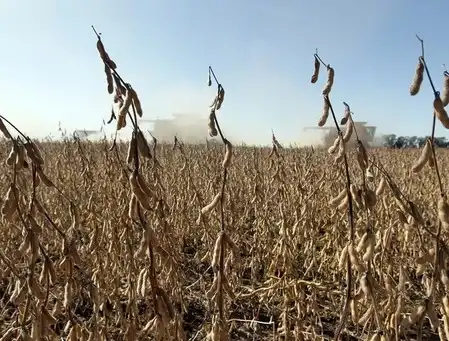Soy corn prices hit three-year low on fund selling, supply outlook
Soybean and corn futures hit three-year lows due to fund selling and increased U.S. supplies, with markets down 10% this year.
Soybean and corn futures have hit a three-year low at the Chicago Board of Trade, with analysts attributing the drop to fund selling and expectations of increased U.S. supplies. The markets have seen a 10% decrease so far this year and are currently at their lowest levels since December 2020.
The record corn harvest in 2023 by U.S. farmers has led to stiff competition for grains and soybeans on the export market due to ample global supplies. Additionally, domestic ending stocks are expected to increase, with projections for 2024-25 corn ending stocks at 2.594 billion bushels, up from 2.172 billion in 2023-24, and soy stocks at 411 million bushels, up from 315 million in 2023-24, according to a Reuters survey.
Matt Wiegand, a commodity broker for FuturesOne, anticipates that the upcoming U.S. Department of Agriculture crop forecasts will reveal significant numbers. The most-active soybean contract settled down 15-3/4 cents at $11.70-1/2 per bushel, reaching a three-year low of $11.68-1/4. Similarly, CBOT corn closed 6-1/2 cents weaker at $4.24-1/4 a bushel, touching a three-year low of $4.22-1/4.
Speculative funds have established large short positions in the markets, leading to further pressure on prices. As Wiegand notes, "The funds haven't been smacked for being short. They have plenty of incentive to add to their position."
Furthermore, U.S. and Euronext wheat futures have set contract lows, with CBOT wheat ending down 12 cents at $5.85-1/2 per bushel and reaching its lowest price in nearly a month.
Looking ahead, the National Oilseed Processors Association is expected to issue a monthly soy crushing report, and the USDA is set to release weekly export sales data for U.S. grains and soy. Andrew Whitelaw, an agricultural consultant at Episode 3, highlights the impact of the rising dollar index, which has made U.S.-origin grains and oilseeds appear expensive.
In conclusion, the soybean and corn futures market is currently experiencing significant downward pressure due to various factors, including record U.S. harvests, global competition, and speculative fund activity. The upcoming USDA reports and market data releases are anticipated to provide further insight into the future of these commodities.












Comments on Soy corn prices hit three-year low on fund selling, supply outlook